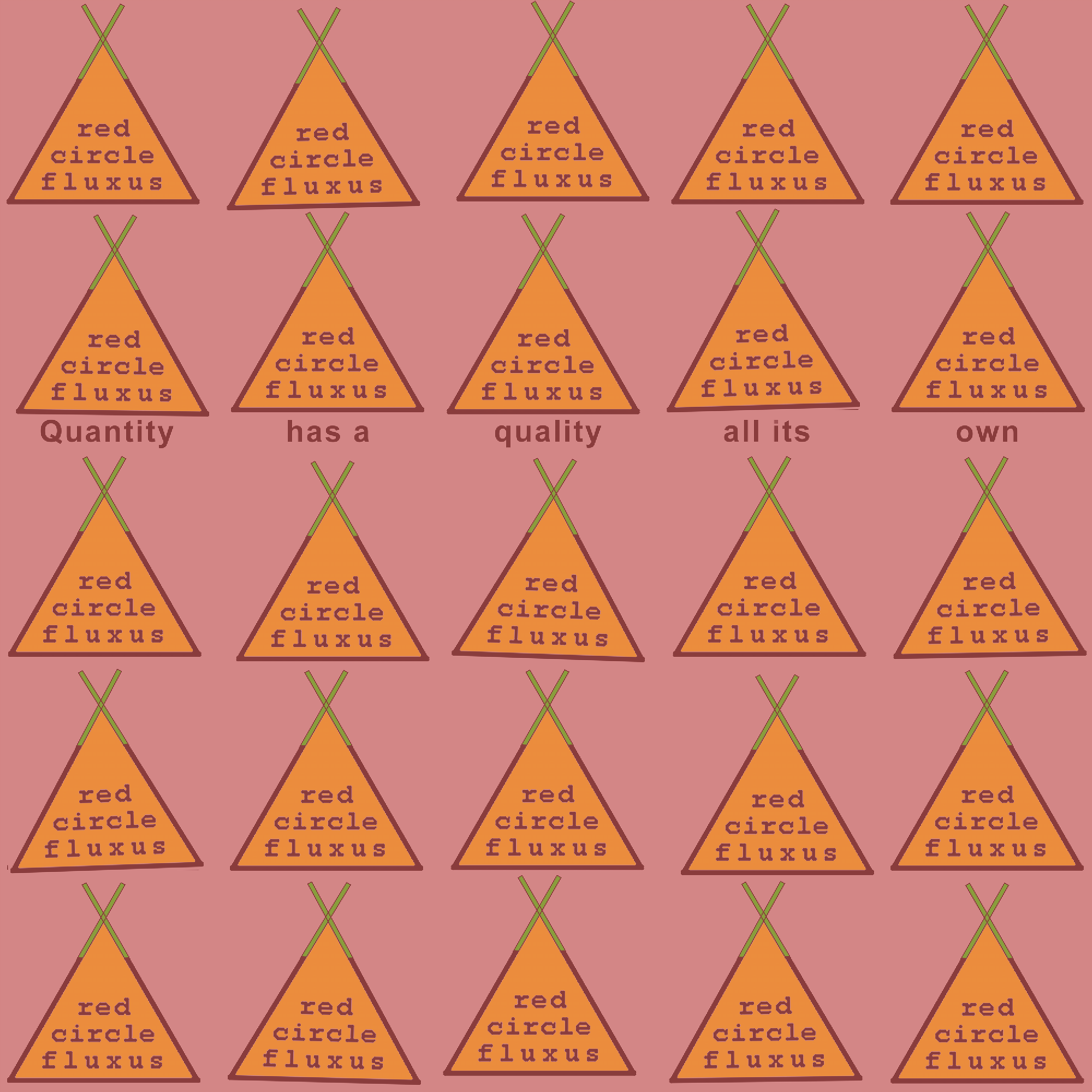The story behind the creation of the image.
Red circle. Allan Revich and the late Crispin Webb (1977 - 2006) introduced the "red circle" theme to the Fluxlist Blog (at http://fluxlist.blogspot.com/) shortly after the blog was launched in early April, 2006. To date the red-circle theme has been the most repeated and the longest running theme on the blog (whose overarching theme is Fluxus). There have been many different variations on this simple theme--"red circle with nothing in it" has been the most frequently re-occurring sub-theme.
Quantity and quality. I decided that creating a digital graphic with one million red circles would be a noteworthy and extreme contribution to the red-circle theme. I borrow this idea of taking something to a quantitative/repetitive extreme from the work of The Art Guys. Taking an object (e.g., a stack of pennies) or process (e.g., painting a phone or a billboard) to a repetitive extreme has been one of the inspired operating principles used by The Art Guys. They have summarized the psychological and aesthetic results of doing this as "Quantity has a quality all its own." And it's true. To the left-brain, one-million identical red circles is simply 1-red-circle repeated 1,000,000 times. The only difference between one and one-million is a small piece of quantitative information. The left brain only needs information about one circle, whether the multiplier is 1 or 1,000,000, and how the circles are organized. To the right-brain, however, the difference between looking at one tiny red circle or looking at a graphic display of one-million of these circles is huge--it's like looking at two very different animals. At least that's my take on "Quantity has a quality all its own." I think the Art Guy's insight is a serious intellectual contribution and a major addition to the Fluxus creativity tool chest.
Orange teepees. I added the matrix of 25 orange "red circle fluxus" triangles as an additional layer in the image to give the whole image more visual interest. This should be especially true from a distance or at a resolution where the red circles are not visible to the eye. This also seems to give the left brain something extra to do ("hey this triangle is tilted to the right a little," "this one seems out of alignment," etc.) while the right-brain takes in the graphic in its own way. The traditional Fluxus "X" symbol (in non-traditional green) on the top of each triangle makes them look like American Indian Teepees or tents. I created this "teepee" symbol and introduced it to the Fluxlist Blog as a contribution to the red circle Fluxus theme--where the concept of "red circle" is conveyed by the text but contradicted by both the triangle and "X" shapes as well as by the dominant color (orange in this case; grey in the original). In my mind, "branding" the red circle theme with a non-red triangle has a dry Fluxus humor to it. I'd like to think that this "teepee" image also connects this theme and this work to the Fluxus Indian Museum--another FLUXUS Midwest projects that has contributed stories and symbols to the Fluxus oeuvre.
That's the story and thinking behind this graphic and this experimental Fluxus project. Thank you for coming. Goodnight, and please drive safely on your way home.


